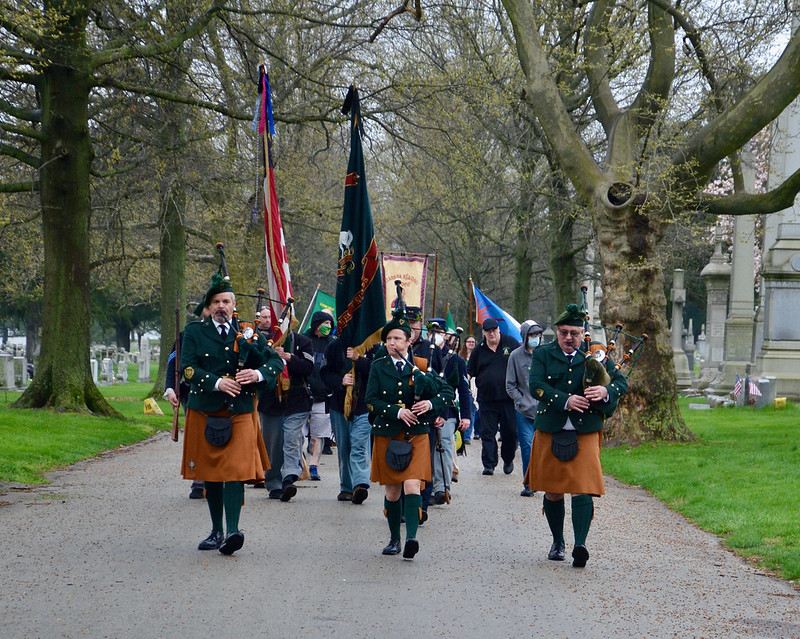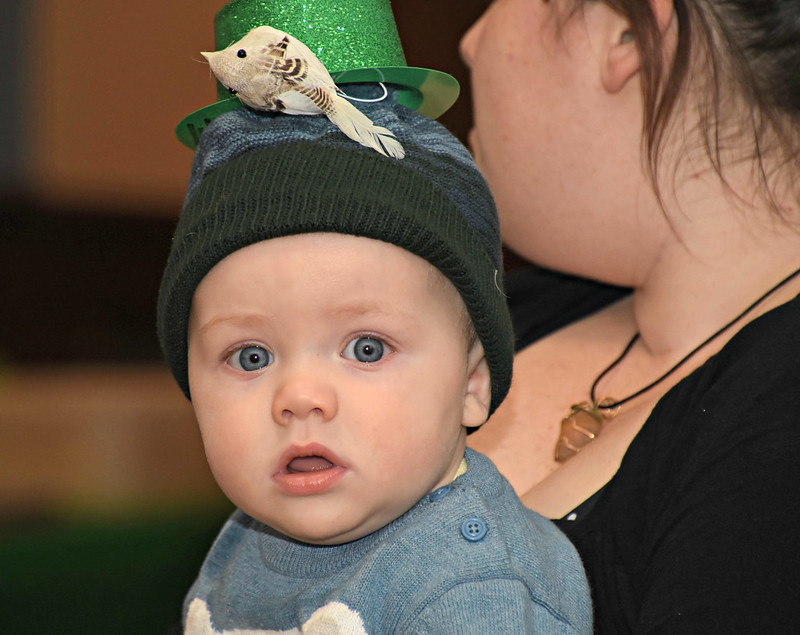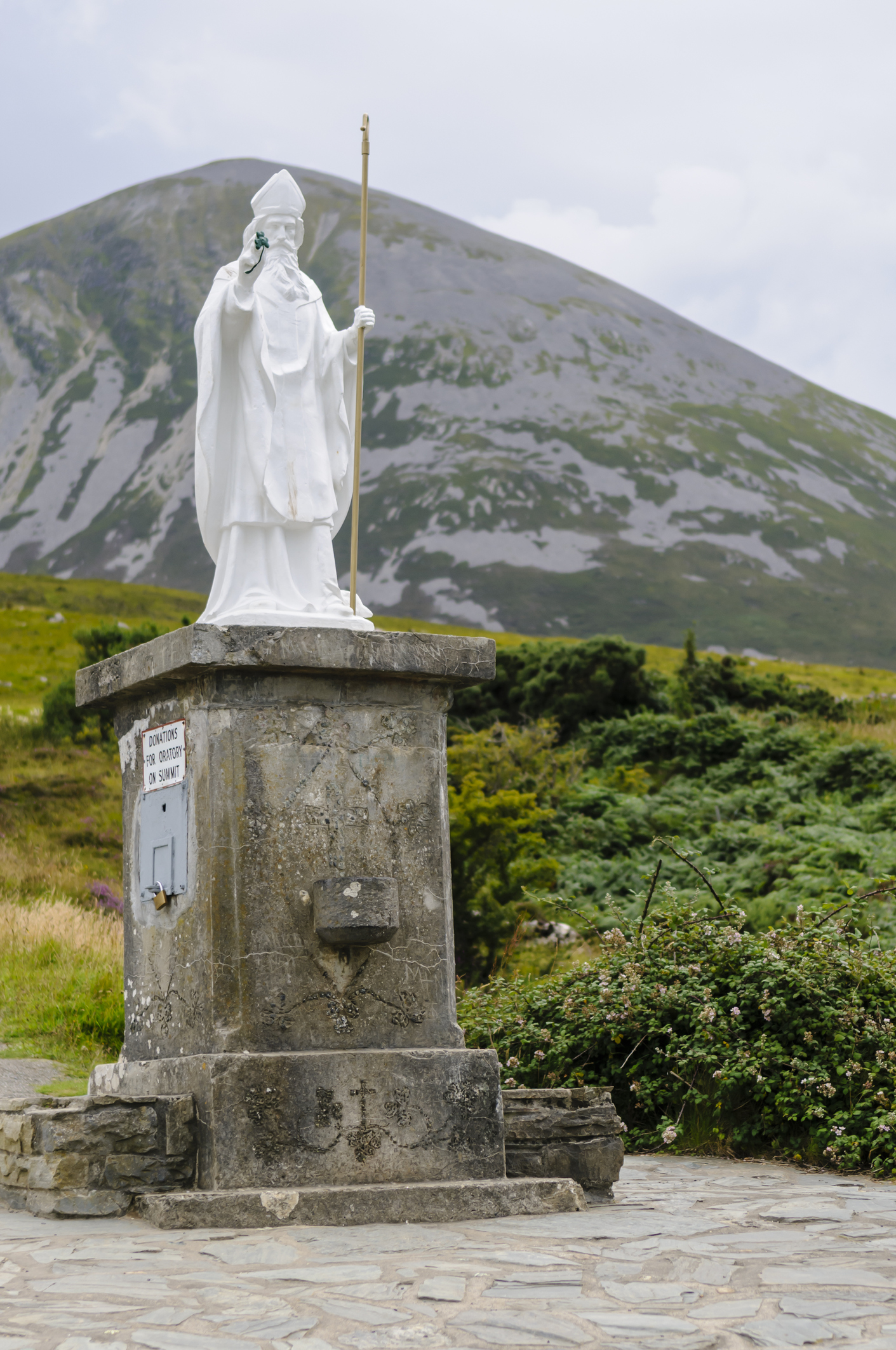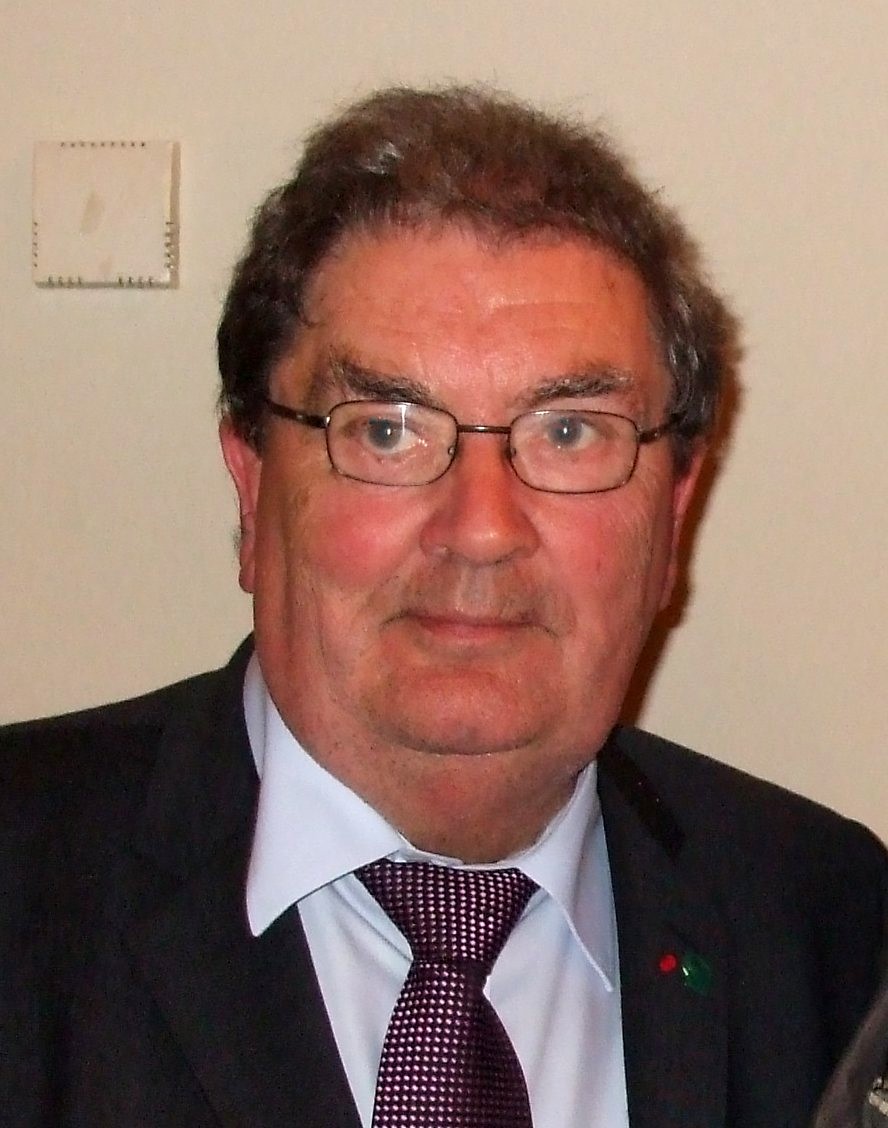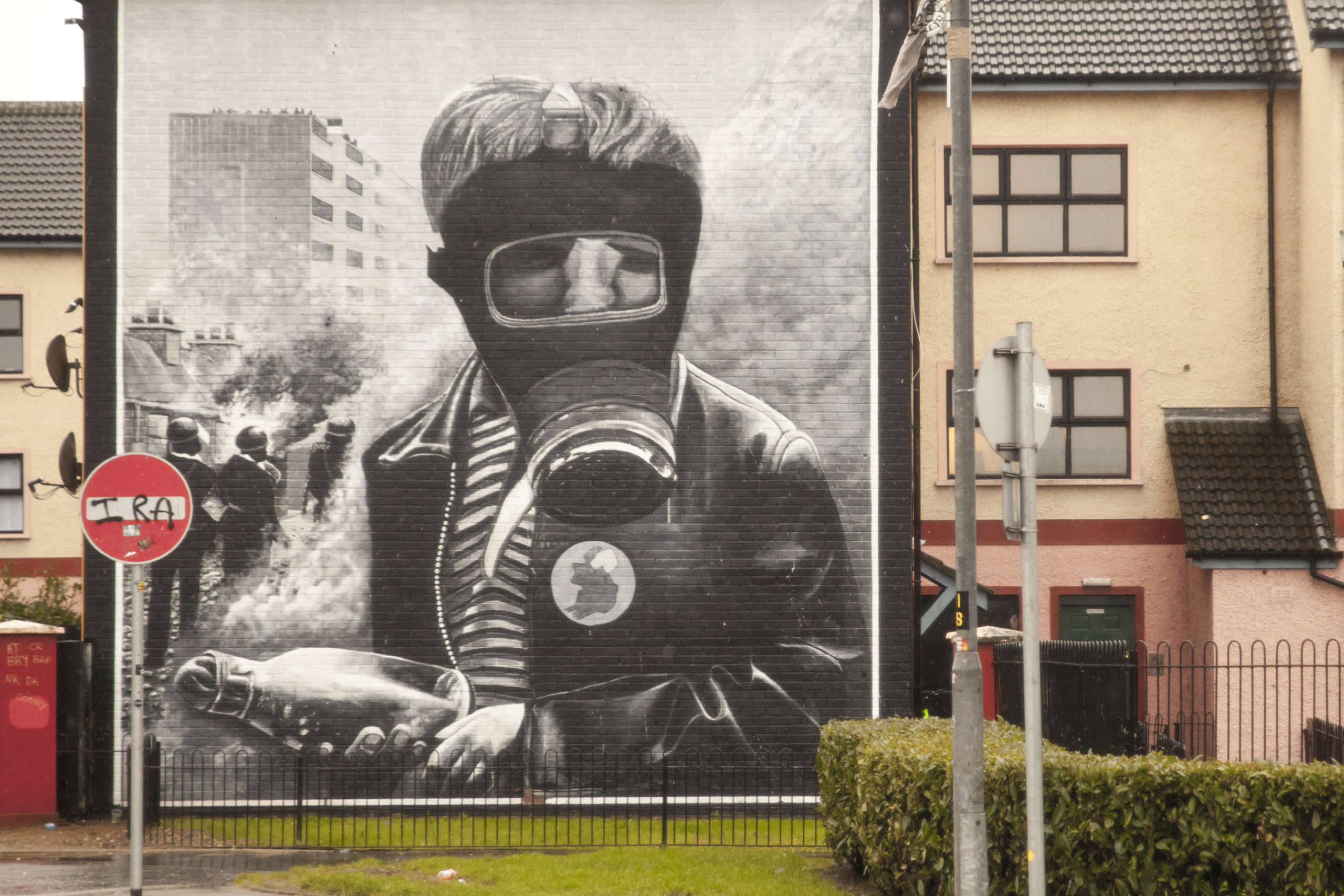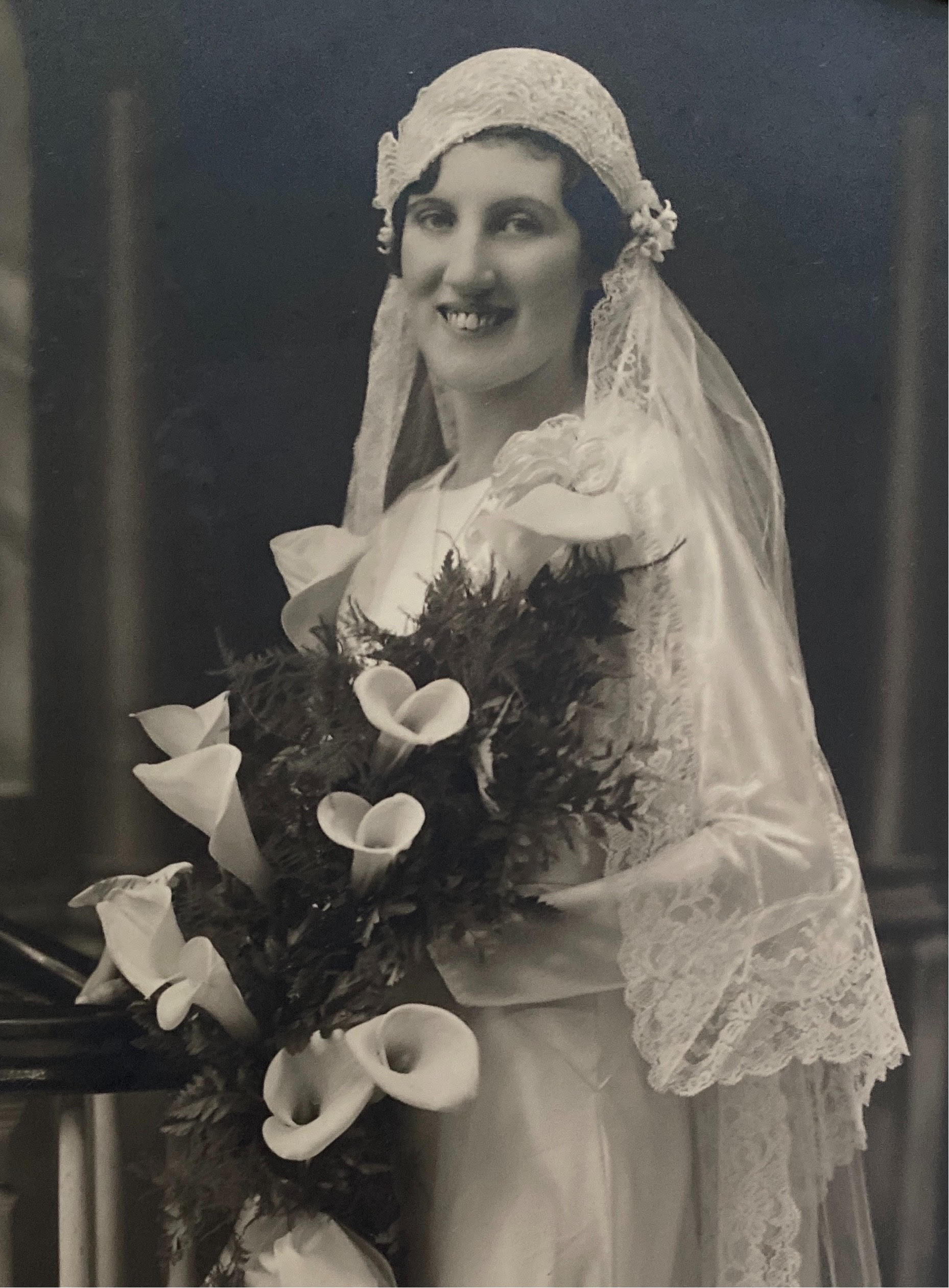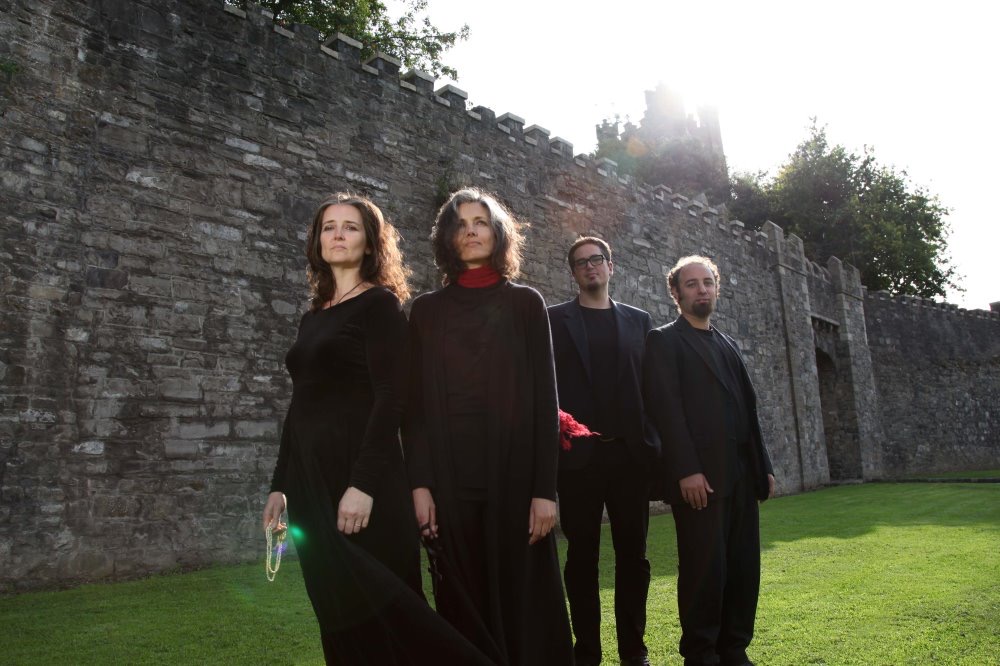Above: William Brennan, left, and Sean McMenamin, point out some items of interest in the Irish Center’s library to Irish Ambassador Michael Collins.
Frank Hollingsworth, a board member of the Commodore Barry Arts and Cultural Center, recalls a time when William Brennan was a guest at Villanova for a ceremony celebrating the digitization of the Commodore John Barry papers.
About 25 people were there, including the chairman of the board of Ireland’s County Wexford, Lori Dillard Rech, president of Independence Seaport Museum, and Villanova President Father Peter M. Donohue.
One by one, guests were invited up to the dais to give a brief talk about the historic event. When Brennan was asked to say a few words, Hollingsworth recalls, he stood up and offered these comments: “I think just about everything that can be said has been said. I don’t have anything additional.”
And then, Hollingsworth recalls with a chuckle, Brennan sat down.
Ironically, there was probably no one in the room who knew more about Barry than William “Billy” Brennan. His knowledge of Irish history, and in particular, the story of the Irish in Philadelphia, was encyclopedic, rivaling that of the late Dennis Clark. He was a keeper of the flame.
Brennan passed away July 28 at the age of 83.
Continue Reading

